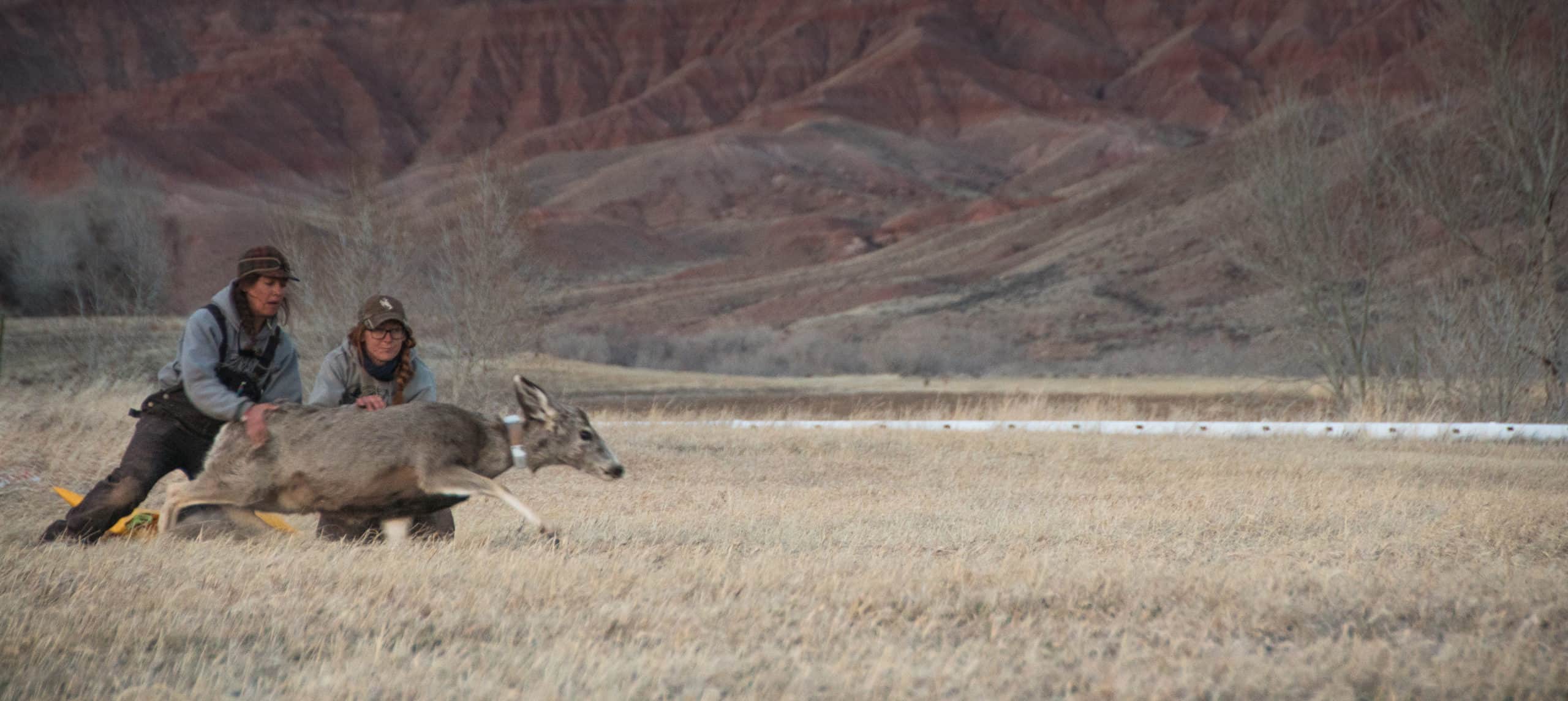Share this article
JWM: Partially sedating deer doesn’t reduce stress
Biologists may use mild tranquilizers as a technique to calm large animals when they capture and handle them, but in a recent study, researchers found that for mule deer, partial sedation may not result in less stress.
“Within the last several years, there has been a push to use partial sedatives as a way to reduce stress in mule deer during captures,” said Anna Ortega, a PhD candidate at the Wyoming Cooperative Fish and Wildlife Service Unit at the University of Wyoming.
“Many advances in research, management decisions and steps in conservation rely on the capture and handling of wild animals,” Ortega said. “But as wildlife biologists, it is our responsibility to continuously reevaluate our impacts on the stress and welfare of animals we are studying and handling.”
Ortega and her colleagues led a study published in the Journal of Wildlife Management looking to see if partial sedation actually reduces stress and promotes survival following captures. After capturing mule deer (Odocoileus hemionus) by helicopter net-gunning in the eastern Greater Yellowstone Ecosystem in 2016 and 2017, they administered the mild tranquilizers midazolam and azaperone to some of the deer and no mild tranquilizers to others and compared their stress levels.
Kicks and vocalizations suggested which deer were stressed, but researchers also measured heart rates, blood oxygen saturation, respiration rates and levels of the stress hormone cortisol.

Compared to a control group, partially sedated mule deer didn’t seem to have lower stress levels.
Credit: Benjamin Kraushaar
They found no difference in any of the acute stress indicators between deer that were treated and those that weren’t, Ortega said, nor did they find any difference in post-capture survival.
But the researchers did find a difference in behavior once the deer were released. Treated deer were more likely to walk, hesitate, and stumble or fall during release than the control group — indications of drug-induced lethargy that researchers say could have consequences for the deer after they’re released.
That doesn’t mean partial sedation should never be used when capturing animals, Ortega said, and the effects could be different in other circumstances, like different drugging doses, different settings and different species. A longer processing time, for example, might have allowed the drugs to be more effective in reducing stress.
“I think we should continue conducting these types of methodology studies in the future to further refine best practices in animal capture and handling,” she said.
This article features research that was published in a TWS peer-reviewed journal. Individual online access to all TWS journal articles is a benefit of membership. Join TWS now to read the latest in wildlife research.
Header Image: A mule deer captured during March 2017. Researchers tested stress reactions of mule deer from being partially sedated. Credit: Benjamin Kraushaar








